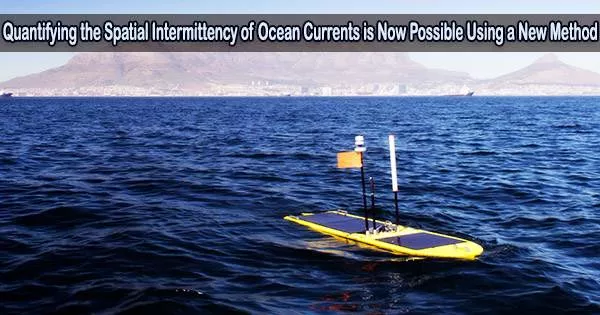Examining the so-called “global conveyor belt” of ocean links requires a thorough understanding of Atlantic Ocean circulation. This is due to the fact that the Atlantic’s latitudinal ends, which border the polar regions, are cold-water formation regions that induce the global conveyor belt to begin.
Due to their great density, the polar waters sink each winter and start the conveyor belt, helping to transfer heat on a global scale, which in turn affects the climate, particularly in Europe.
Understanding the strength of all the diffusive processes, or the processes that lead to the spatial and temporal intermittency of the big currents, is important to measure this circulation on a planetary scale.
A new study led by the Institut de Ciències del Mar (ICM-CSIC) in Barcelona, which delves into the processes of horizontal diffusion in the South Atlantic, has developed a new methodology for calculating this diffusion at both regional and global levels.
“The new methodology, which we have named ROD (Radial Offset by Diffusion), allows us to determine the horizontal diffusion coefficients in the ocean and to estimate their spatial variability,” states Anna Olivé, leading author of the study.
Thanks to the increase in the number of drifting buoys and the continuous improvements in high-resolution numerical models and reanalysis, the ROD method will provide us with more precise estimates that will allow us to better predict the temporal evolution of large-scale processes that have a major impact on the climate of our planet, such as the global conveyor belt.
Anna Olivé
In order to complete this study, which was published in the Journal of Atmospheric and Oceanic Technology, researchers analyzed the displacements of more than 600 drifting buoys between the years 2002 and 2020. Drifting buoys enable for the direction and speed of ocean currents to be known because they drift with them.
“We then numerically simulated these buoys’ trajectories and calculated the distance between the final position of the drifting buoys and that estimated with the numerical simulations, which allowed us to quantify the horizontal diffusive processes existing in the region,” adds Anna Olivé.
The study demonstrates that the largest horizontal diffusion occurs in the first 200 meters of water, close to the ocean’s top, while the least values are found between 1400 and 2000 meters of water. Due to the powerful Falkland Current, which travels north along Patagonia’s Atlantic coast until it reaches La Plata River, diffusion also intensifies in the most northern Antarctic fronts.
“This important spatial difference confirms the large variability of horizontal diffusion in the ocean, which highlights that a constant coefficient cannot be used throughout the ocean,” explains Josep Lluís Pelegrí, co-author of the study.
Unlike others, the ROD method is easy to implement and does not require excessive computational use. According to Anna Olivé, “This facilitates its application and makes it an effective tool for understanding the processes of diffusion and turbulent mixing in regions as dynamic as the Antarctic fronts.”
For each oceanic region, the new methodology will make it feasible to determine which horizontal diffusion coefficient is best to use for research. The ability of oceanographic numerical models to predict the future has been constrained up until now by the uncertainties in this parameter.
“Thanks to the increase in the number of drifting buoys and the continuous improvements in high-resolution numerical models and reanalysis, the ROD method will provide us with more precise estimates that will allow us to better predict the temporal evolution of large-scale processes that have a major impact on the climate of our planet, such as the global conveyor belt,” concludes Anna Olivé.





